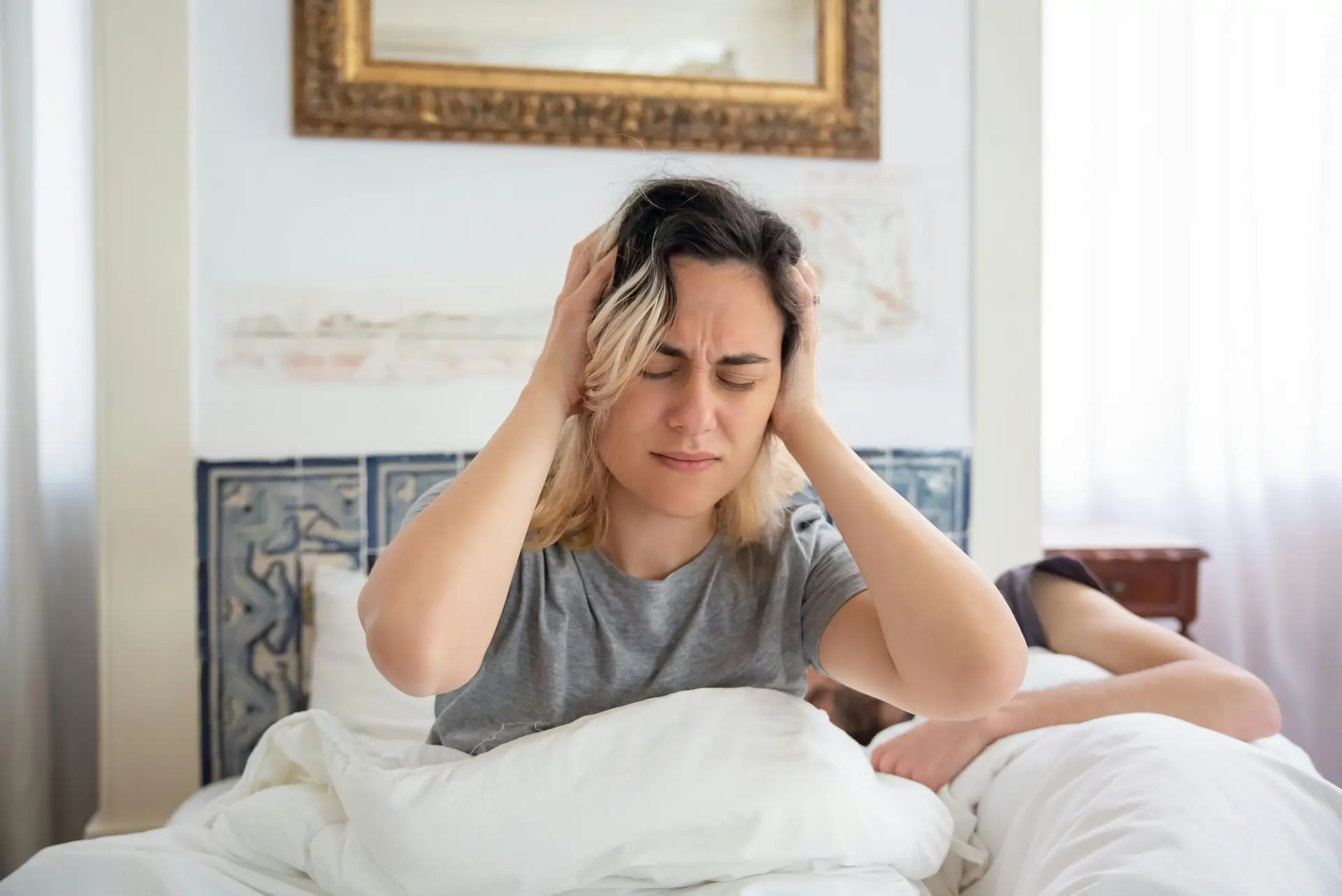
Best Occipital Neuralgia Doctor: Living with sharp, electric pain that shoots from the base of the skull toward the eye or into the scalp is more than “just a headache”—it’s life-disrupting. For many people in Sarasota, Lakewood Ranch, and Bradenton, those jolts, zings, and pressure headaches are the hallmark of Occipital Neuralgia (ON).
If you’ve tried medications, injections, or even physical therapy with limited relief, there’s a strong chance the underlying issue hasn’t been fully addressed: the upper cervical spine. At Lavender Family Chiropractic in Sarasota, we specialize in upper cervical chiropractic, using advanced 3D CBCT imaging and functional nervous system scans (Tytron thermography) to find and correct the root mechanical and neurological drivers of occipital neuralgia, migraines, and chronic headaches—gently and precisely.
Our purpose is simple and personal: help you get your life back without relying on endless pills or invasive procedures. If you’ve been searching for the best occipital neuralgia doctor or “upper cervical chiropractor near me,” you’re in the right place.
Best Occipital Neuralgia Doctor: What Is Occipital Neuralgia (ON)?
Occipital Neuralgia is a painful irritation, entrapment, or inflammation of the greater, lesser, or third occipital nerves—sensory nerves that exit the upper neck (C1–C3) and travel through the muscles and fascia to the back and top of the head. Because these nerves pass near dense connective tissues and deep suboccipital muscles, any structural dysfunction—especially at C1 (atlas) and C2 (axis)—can provoke severe, shooting, shock-like pain.
Common symptoms include:
- Sharp, stabbing, or electric pain at the base of the skull
- Pain that radiates to the scalp, behind the eye, or toward the ear
- Tenderness where the neck meets the head (suboccipital region)
- Scalp sensitivity, burning, or tingling
- Light or sound sensitivity (often overlapping with migraine features)
- Headaches that worsen with neck movement, posture, or pressure
- Eye strain or a “pulling” sensation behind one eye
Because ON often overlaps with migraine and cervicogenic headache, it’s frequently misdiagnosed—leading to years of chasing symptoms instead of correcting the cause.
Why the Upper Cervical Spine Matters So Much
The upper cervical spine (atlas C1 and axis C2) is the most mobile and neurologically dense region of the neck. It cradles the skull, protects the lower brainstem, and serves as a highway for blood flow, cerebrospinal fluid (CSF) dynamics, and neural signaling. When this region is misaligned—from old whiplash, sports impacts, falls, tech-neck posture, or even birth trauma—three things often happen:
- Mechanical Irritation of Nerves: Subtle shifts can alter the gliding paths of the greater and lesser occipital nerves, increasing friction and compression.
- Muscle Guarding and Fascial Tension: The deep suboccipital muscles tighten to stabilize the head on the neck, which can form trigger points that radiate pain upward.
- Neurovascular Stress: Altered biomechanics around C1–C2 can influence vertebral artery flow, venous drainage, and CSF movement, aggravating headache physiology and brainstem sensitivity.
That trio—nerve irritation, muscular guarding, and neurovascular stress—creates the “perfect storm” for occipital neuralgia, migraines, tension-type headaches, and head pressure. Correcting the atlas/axis mechanics can release that storm at its source.
Occipital Neuralgia, Migraines, and Headaches: How They Intersect
It’s common to carry more than one diagnosis: ON plus migraine, or ON plus cervicogenic headache. Here’s a quick way to think about it:
- Occipital Neuralgia: sharp, stabbing, shock-like pain, often tender at the skull base; may be triggered by neck movement or pressure.
- Migraine: throbbing or pulsating pain, nausea, light/sound sensitivity; neurologically mediated and frequently influenced by brainstem excitability.
- Cervicogenic Headache: pain referred from cervical structures (joints, discs, muscles) that radiates to the head; often related to posture or movement.
Upper cervical misalignment can play a role in all three. It can irritate occipital nerves directly, drive muscle spasm and trigger points, and heighten brainstem sensitivity that primes the body for migraine cascades. This is why patients at Lavender Family Chiropractic often report improvement in multiple head and neck symptoms as alignment normalizes and the nervous system calms.
Why Traditional Symptom-Only Approaches Fall Short
Conventional treatments often include NSAIDs, nerve blocks, steroid injections, botulinum toxin, muscle relaxers, anticonvulsants, or antidepressants. These tools can be useful as short-term bridges, but they don’t typically correct the upper cervical mechanics that keep provoking the nerves. If the atlas remains “off,” the same friction, tension, and neural irritation will tend to recur—despite temporary relief.
That’s the gap Upper Cervical Chiropractic fills: it focuses on the root mechanical driver so function can normalize. Think of it less like “turning off the fire alarm” (meds) and more like removing the smoke (misalignment, nerve pressure, brainstem irritation).
Upper Cervical Chiropractic at Lavender Family Chiropractic
At Lavender Family Chiropractic—the leading choice for patients searching “chiropractor Sarasota Florida,” “chiropractor near me,” and “Vertigo doctor near me” or “Migraine doctor near me”—we practice gentle, precise upper cervical chiropractic. Our approach is data-driven, patient-specific, and collaborative.
Advanced 3D CBCT Imaging
We begin with 3D Cone Beam CT (CBCT) imaging to view the exact orientation of C1 and C2 in three dimensions. Traditional 2D X-rays can miss the nuanced rotations, tilts, and lateralities that matter most in ON, migraines, and chronic headaches. With CBCT, we can see how much the atlas is off and in what direction—so your correction is custom, not generic.
Functional Nervous System Scans (Tytron Thermography)
We pair CBCT findings with Tytron thermography, a non-invasive scanning system that maps thermal patterns along the spine—an objective window into autonomic nervous system balance. These scans help us identify patterns of nerve interference and monitor whether your body is adapting, stabilizing, and holding your correction over time.
Gentle, Precise Corrections—No Twisting, Popping, or Cracking
Our upper cervical adjustments are highly specific and very light. We do not twist or torque your neck. Subtle, measured force vectors restore alignment where the problem starts—atlas/axis—so muscles can relax, nerves can de-tether, and your body can re-establish stability.
Customized Care Plans and Progress Checks
After your initial imaging and scans, we design a tailored plan that respects your goals, schedule, and physiology. Post-adjustment Tytron checks and periodic re-evaluations ensure that your improvements are real, trackable, and lasting.
What Patients Commonly Experience as Alignment Improves
Many of our occipital neuralgia and migraine patients report a sequence like this:
- Early Phase (first few weeks): less “electric” pain, reduced scalp tenderness, improved neck rotation, better sleep.
- Stabilization Phase (weeks to months): longer symptom-free stretches, fewer triggers, diminished intensity if headaches occur, calmer nervous system.
- Resilience Phase: the body “holds” correction better; you feel more robust against stress, posture demands, and daily activities.
Every person’s timeline is unique. Old injuries, repetitive strain, and stress levels can influence pace. We’ll guide you with clarity, measure progress objectively, and adjust (pun intended) the plan accordingly.
Common Root Causes We See (That Patients Often Overlook)
- Old car accidents/whiplash (even “minor” fender-benders)
- Sports impacts (soccer headers, cheerleading, wrestling, football, gymnastics)
- Tech-neck/posture strain (prolonged laptop or phone use)
- Birth or childhood trauma (forceps, falls, trampoline, playground)
- Dental or jaw influences (TMJ stress can interplay with suboccipitals)
- Chronic stress (neuromuscular bracing, poor sleep, bruxism)
You don’t have to remember a “big” injury for the atlas to be off. Small, repeated insults add up—especially at the most delicate, mobile joint complex in your spine.
Lifestyle Strategies That Complement Upper Cervical Care
Correcting alignment is foundational. Supporting that correction creates momentum:
- Ergonomics & Posture: Raise screens to eye level, bring work to you, and use a supportive chair.
- Micro-Movement Breaks: 30–60 second resets each hour: chin retractions, shoulder rolls, diaphragmatic breaths.
- Neck-Friendly Sleep: Use a pillow that supports neutral spine; avoid side-bending into a tall stack or stomach sleeping with a rotated head.
- Gentle Mobility & Breathwork: Controlled neck mobility (within pain-free range) and slow nasal breathing reduce muscle guarding.
- Hydration & Mineral Balance: Hydration supports tissue resilience; magnesium may calm overactive muscles (ask your provider what’s right for you).
- Trigger Awareness (Without Obsession): Light sensitivity, dehydration, processed foods, and poor sleep can stir the pot—alignment reduces reactivity, but good habits help consolidate gains.
Who We Help (Beyond Occipital Neuralgia)
Because the upper cervical spine influences the whole nervous system, we commonly see improvement with:
- Migraines, chronic headaches, and head pressure
- Vertigo, dizziness, vestibular dysfunction (including BPPV and MdDS)
- Trigeminal neuralgia and facial pain syndromes
- TMJ and jaw-face-ear pain
- POTS/dysautonomia (as part of a multi-disciplinary plan)
- Neck pain, shoulder pain, and post-whiplash syndromes
- Fibromyalgia-like widespread pain and poor sleep
If you’ve been hunting for a chiropractor near me who understands complex head and neck cases, our three-doctor team is here to help.
Meet Your Upper Cervical Team in Sarasota
- Dr. Rusty Lavender
- Dr. Jacob Temple
- Dr. Will Guzinski
We’re obsessed—in the best way—with precision. We use 3D CBCT, Tytron thermography, meticulous analysis, and gentle, patient-specific corrections to help you heal more efficiently and sustainably. We also coordinate with your other providers when needed; integrative care helps you win faster.
What Your First Visits Look Like
- Consultation & History: We listen to your story, map timelines, and correlate triggers with neck mechanics.
- CBCT Imaging: High-resolution, low-dose 3D imaging of the upper cervical spine to pinpoint misalignments.
- Tytron Scan: A functional snapshot of autonomic balance and nerve interference patterns.
- Report of Findings: Clear explanation—what’s off, why it matters, and how we’ll correct it.
- First Correction: A gentle upper cervical adjustment tailored to your unique measurements—no twisting or cracking.
- Post-Adjustment Scan: Immediate feedback on how your nervous system responded.
- Care Plan: Frequency and reassessments designed around stability, not dependency.
Results That Matter (Stories We Hear Every Week)
- “The stabbing pain behind my eye stopped showing up every day.”
- “I can finally work at the computer without that crushing base-of-skull ache.”
- “My migraines are less frequent and shorter—my family notices I’m myself again.”
- “I sleep through the night. I didn’t realize how much pain was draining my energy.”
We never take results for granted. We measure, we adjust, and we stay accountable to your goals.
Top 15 FAQs About Occipital Neuralgia and Upper Cervical Chiropractic
1) How do I know if I truly have Occipital Neuralgia?
ON is characterized by piercing, shock-like pain starting near the base of the skull and traveling upward, often tender to touch at the suboccipital region. A careful exam—including palpation of the nerve course, postural testing, and correlating neck movement with symptoms—helps differentiate ON from migraine or cervicogenic headache. At Lavender Family Chiropractic, we add CBCT and Tytron to connect symptoms with actual upper cervical mechanics.
2) Can upper cervical chiropractic help migraines as well as ON?
Yes. While ON is nerve-irritation dominant and migraine is neurovascular/brainstem dominant, both can be amplified by upper cervical misalignment. By restoring atlas/axis mechanics, we often calm both conditions—fewer triggers, less intensity, and better recovery after stressors.
3) Will you twist or “crack” my neck?
No. Our corrections are gentle and precise, guided by 3D CBCT measurements. Patients are often surprised by how light the adjustment feels—and how powerful the results can be.
4) What makes CBCT and Tytron different from regular X-rays or “feeling the spine”?
CBCT provides 3D clarity on the exact angles of misalignment—vital in a region with complex rotations and tilts. Tytron thermography gives functional, objective data about autonomic patterns and nerve interference. Together, they allow us to measure, not guess.
5) How quickly might I feel relief?
Some patients notice changes after the first few corrections—less sharp pain, improved neck motion, better sleep. Others, especially with chronic issues, improve progressively over weeks to months. The goal is stability that holds, not temporary quick fixes.
6) Will I have to keep coming forever?
We design care to help you hold alignment, not depend on constant adjustments. After a period of stabilization, many patients transition to occasional wellness checks to support long-term resilience—similar to dental hygiene for your spine and nervous system.
7) Can this help if my ON started after a car accident years ago?
Absolutely. Old whiplash often leaves subtle atlas/axis misalignments that remain uncorrected for years. Correcting those mechanics now can still relieve nerve irritation and reduce pain patterns, even if the injury is “ancient history.”
8) Is upper cervical chiropractic safe for seniors or kids?
Yes. Because our adjustments are gentle and specific (no twisting, cracking, or high-velocity torque), they’re appropriate for all ages. We tailor the force and vectors to the individual.
9) Do I need an MRI before seeing you?
Not typically. If your history suggests red flags, we’ll coordinate with your medical team. For mechanical/neurofunctional cases, CBCT and Tytron give us the precision we need to correct the problem safely.
10) My scalp burns and brushing my hair hurts—could that be ON?
It can be. Scalp allodynia or burning is common with occipital nerve irritation. We’ll test the nerve course, evaluate upper cervical mechanics, and see how your symptoms respond as alignment improves.
11) What about botox or nerve blocks—should I still do them?
Those tools can offer short-term relief, and we respect your medical plan. Our role is to address the cause (mechanics and neurology). Many patients find they need fewer procedures once the upper cervical spine is corrected.
12) Can posture and sleep positions make ON worse?
Yes. Prolonged forward head posture, side-sleeping with an overly tall pillow, or stomach sleeping with a rotated neck can perpetuate irritation. We’ll coach you on neck-friendly ergonomics and sleep setup to protect your gains.
13) Will insurance cover this?
Our office is out of network with insurance. Many of our patients receive a superbill to submit to their insurance for reimbursement based on their coverage. We also offer different payment options and financing to make care accessible.
14) How many corrections will I need?
It depends on your anatomy, injury history, daily demands, and how well you hold the alignment. We re-scan and reassess to keep care honest and customized.
15) What if I’ve “tried chiropractic” before and it didn’t help?
Upper cervical is different—targeted, measured, and gentle. If your past care didn’t include C1/C2-specific imaging and thermography, you likely haven’t experienced what we do at Lavender Family Chiropractic.
How to Choose the Best Occipital Neuralgia Doctor for You
When you’re comparing providers in Sarasota, Lakewood Ranch, and Bradenton, consider these factors:
- Precision Matters: Do they use 3D CBCT for atlas/axis analysis?
- Function Tracking: Do they employ Tytron thermography or similar to monitor objective progress?
- Technique Philosophy: Are adjustments gentle and specific (no twisting or cracking) with clear biomechanical rationale?
- Experience With Head & Neck Cases: Do they regularly manage ON, migraines, cervicogenic headaches, and vestibular issues?
- Collaborative Mindset: Will they coordinate with other professionals if your case needs a team?
- Testimonials and Community Trust: Do patient reviews reflect consistent outcomes and compassionate care?
At Lavender Family Chiropractic, these are our standards—not extras.
Our Service Areas & Community Commitment
We proudly care for patients from Sarasota, Bradenton, Lakewood Ranch, Parrish, Ellenton, Venice, Osprey, Punta Gorda, St. Petersburg, Siesta Key, Longboat Key, Lido Key, and Myakka City. Whether you found us by searching “upper cervical chiropractor near me,” “chiropractor Sarasota Florida,” “Migraine doctor near me,” or a friend’s referral, know that you’ll be welcomed like family and treated with the same precision we’d want for our own loved ones.
When We Refer Out (Because Your Safety Comes First)
While most ON and chronic headache cases include a mechanical component, some presentations require medical collaboration. We refer promptly if we see signs of infection, acute neurological deficit, uncontrolled hypertension, new-onset thunderclap headache, progressive vision changes, or other red flags. High-quality care means doing the right thing at the right time, even if that means bringing in another expert.
Your Next Step: Correct the Cause, Reclaim Your Life
If occipital neuralgia, migraines, or chronic head pressure have been dictating your days, let’s change that. Our CBCT-guided, Tytron-verified upper cervical care is built to find it, fix it, and help you hold it—so you can focus on living, not managing pain.
Lavender Family Chiropractic in Sarasota Florida offers complimentary consultations to learn more about you. Click the link below!
https://intake.chirohd.com/new-patient-scheduling/724/lavender-family-chiropractic
Visit our Website!
To learn more about us go to http://www.chiropractorsarasotaflorida.com
We also service Bradenton, Parrish, Ellenton, Ruskin, Venice, Tampa, St. Pete, Osprey, Longboat, Lakewood Ranch, Myakka City.
If you are in Tampa, Fort Myers, or Salt Lake City, you can visit my other locations! NeckWise Upper Cervical. Visit, www.neckwise.com
If you are not local, visit www.uccnearme.com to find a doctor in your area
Lavender Family Chiropractic
📍 5899 Whitfield Ave Ste 107, Sarasota, FL 34243
📞 (941) 243-3729
🌐 www.chiropractorsarasotaflorida.com
IG: @lavenderfamilysrq | TikTok: @drrustylavender
Insurance & Payments: Our office is out of network. Many patients use a superbill for potential reimbursement depending on their plan. We also offer multiple payment and financing options.
Ready to begin? Call (941) 243-3729 or visit www.chiropractorsarasotaflorida.com to schedule your consultation today.
Bonus: Quick Reference Guide
- Condition: Occipital Neuralgia (sharp, electric pain from upper neck to scalp/eye)
- Driver: Often upper cervical misalignment (C1/C2) provoking nerve irritation and brainstem stress
- Approach: 3D CBCT, Tytron thermography, gentle atlas/axis corrections, posture & lifestyle coaching
- Expect: Measurable progress, less stabbing pain, calmer headaches, improved motion, better sleep
- Why Us: Precision, objectivity, compassion, and a proven track record across Sarasota, Bradenton, and Lakewood Ranch
You don’t have to “cope” forever. With the right plan—and a team that treats the cause as carefully as the symptoms—you can move from surviving to truly living again. We’re here to help you take that step.



